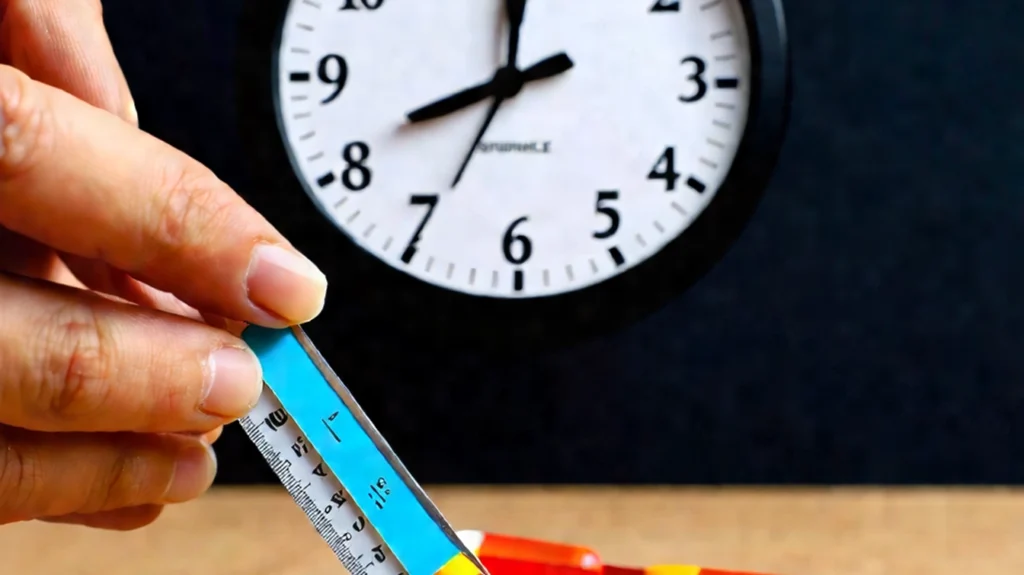If you’re curious about Modafinil and its benefits, uses, you’re not alone. Known as a wakefulness-promoting agent, Modafinil is widely used for conditions like narcolepsy and shift work sleep disorder. Its uses extend to cognitive enhancement, offering sharper focus and improved productivity for some users. However, understanding the recommended Modafinil dosage, its uses, and potential side effects is crucial for safe and effective use. Modafinil as a controlled substance, it’s essential to learn about its regulations and proper administration. Ready to dive deeper? Explore this overview of Modafinil for a comprehensive guide on its impact on wakefulness and focus.
What is Modafinil?
If you’ve been searching for a solution to combat excessive sleepiness, modafinil might have crossed your radar. Doctors often refer to it as a wakefulness-promoting agent and frequently prescribe it for conditions like narcolepsy and shift work sleep disorder. However, modafinil isn’t just about staying awake—its effects on focus and cognition have also made it a topic of intriguing conversation. To fully understand its value, let’s explore how this drug works and its classification.
Modafinil Drug Class and Mechanism of Action
Modafinil belongs to a group of medications known as eugeroics, which means “wakefulness enhancers.” While its precise mechanism isn’t fully understood, researchers do know it plays a role in tweaking your brain’s chemistry. Modafinil primarily works by affecting neurotransmitters, particularly dopamine, in your central nervous system. It blocks the reuptake of dopamine, leading to increased extracellular dopamine levels. What does that mean in simpler terms? It improves your alertness and focus without causing the jittery energy typical of other stimulants.
As a controlled substance (classified as Schedule IV in the U.S.), modafinil is recognized for its relatively low potential for abuse. However, misuse can still occur, meaning it’s important to follow your physician’s guidance closely. Interested in diving deeper into topics related to modafinil and its uses?
Is Modafinil a Stimulant?
This is a question that often arises: is modafinil actually a stimulant? The short answer is no—at least not in the traditional sense. Classic stimulants like amphetamines work by directly boosting dopamine release, which can lead to a “high” and, potentially, a cycle of dependence. Modafinil, on the other hand, relies on more targeted mechanisms, enhancing wakefulness and cognition without the intense spikes in energy or crashes later on.
This unique profile also sets modafinil apart in terms of side effects. While you may still experience mild symptoms like headaches or nausea, it lacks many of the harsher side effects associated with amphetamines. Want to learn more about how modafinil compares to similar medications?
In short, modafinil is often described as a “stimulant-like” drug without being a classic CNS stimulant. It fills a unique space in the pharmaceutical world, offering wakefulness and productivity benefits without many of the downsides of traditional stimulants.
Common Uses of Modafinil
Modafinil is a versatile medication primarily regarded for its wakefulness-promoting abilities. It’s one of the go-to treatments for excessive sleepiness linked to specific medical conditions. However, its applications extend beyond sleep disorders. Let’s dive into the common uses, dosage of Modafinil remarkable drug.

Medical Uses of Modafinil
Modafinil is most commonly prescribed to address sleep-related conditions that interfere with daily functioning. Here’s where it shines:
- Narcolepsy: For individuals suffering from narcolepsy, modafinil offers a reliable way to stay awake during the day. This chronic neurological disorder disrupts the ability to regulate sleep-wake cycles, leading to sudden bouts of sleepiness.
- Shift Work Sleep Disorder (SWD): If you’re among those working graveyard shifts or irregular hours, SWD might be a familiar term. Modafinil helps combat the drowsiness that occurs when working against your body’s natural sleep rhythm.
- Obstructive Sleep Apnea (OSA): While Continuous Positive Airway Pressure (CPAP) machines target the airway obstruction in OSA, modafinil is often used to manage the excessive daytime sleepiness these patients experience despite treatment.
In each of these roles, modafinil uses to supports wakefulness, enabling sufferers to maintain their focus and energy throughout the day.
Modafinil for ADHD: What You Need to Know
The potential of modafinil in treating Attention-Deficit/Hyperactivity Disorder (ADHD) is a topic of growing interest and, admittedly, some debate. While the FDA has not currently approved it for ADHD, many people have explored its off-label use.
Why consider modafinil uses for ADHD? Its ability to enhance focus and regulate attention is where it shows promise. Unlike traditional ADHD medications like amphetamines, modafinil carries a lower risk of dependency and tends to have milder side effects. Some studies even suggest it could be a viable alternative for those who do not respond well to conventional treatments.
However, it’s not all smooth sailing. The lack of FDA approval means there’s less comprehensive research, and its long-term impact on ADHD symptoms remains unclear. This makes consultation with a qualified healthcare provider essential if you’re considering this route.
Modafinil continues to be a subject of fascination, not just for its medical applications but also for its broader cognitive benefits. As research evolves, so too might the list of conditions addressed by this fascinating compound. But as with any medication, Understanding the proper uses and limitations of Modafinil is crucial for ensuring safe and effective treatment.
Understanding Modafinil Dosage
When considering modafinil, it’s essential to understand how dosages are structured to address specific conditions. Whether you’re using it to combat sleep disorders or for other off-label purposes, knowing the recommended dosage and adjustments for individual needs can make a big difference.

Standard Modafinil Dosages
Modafinil dosage generally depends on the condition being treated. Here’s a breakdown of the standard approaches:
- Narcolepsy: For patients with narcolepsy, a standard dose of 200 mg is taken once daily in the morning. This schedule helps manage excessive daytime sleepiness throughout the day, granting you more consistency in your wakefulness.
- Shift Work Sleep Disorder (SWD): If your work schedule conflicts with your natural sleep rhythm, modafinil uses can help. A dose of 200 mg is usually taken about an hour before your shift begins, helping you stay alert while on the clock.
- Obstructive Sleep Apnea (OSA): Coping with lingering fatigue despite CPAP therapy? A typical 200 mg dose taken once in the morning can alleviate excessive sleepiness without interfering with nighttime treatment.
Dosage Adjustments for Special Populations
Not all individuals can tolerate the standard dosage, uses of modafinil. Variations in health status, age, or other medications may require specific adjustments:
- Elderly Patients: Aging can affect how your body processes medications. For this reason, doctors often prescribe lower doses to older adults to minimize potential side effects like dizziness or cardiovascular strain.
- Severe Hepatic Impairment: If you have significant liver damage, modafinil elimination can slow down, leading to higher drug levels in your system. In such instances, the recommended dose is often reduced to half (e.g., 100 mg instead of 200 mg).
- Renal Issues: While modafinil is primarily metabolized by the liver, patients with severe kidney challenges might still require careful consideration for dosage. Regular monitoring by your healthcare provider ensures dosing stays safe.
- Minimizing Side Effects: Some people are more sensitive to modafinil, experiencing headaches, nausea, or restlessness even at lower doses. In these cases, starting small—perhaps with a 100 mg tablet—can help your body adjust before increasing to the full dose.
Always discuss your personal health considerations with your doctor before starting or adjusting modafinil.
Understanding the nuances of modafinil dosage, uses is critical to balancing its benefits with your specific health needs. This thoughtful approach ensures maximum wakefulness while guarding against unnecessary risks.
Side Effects of Modafinil
While modafinil offers clear benefits for treating sleep disorders and boosting productivity, it isn’t without its side effects. Understanding the possible reactions can help you make an informed decision about using this medication. Let’s explore the common and rare side effects associated with modafinil and discuss when it’s time to consult a healthcare provider.

Common Side Effects
Like many medications, modafinil can cause mild side effects for some users. These are often manageable and typically diminish as your body adjusts to the medication. The most frequently reported issues include:
- Headaches: This is the most common complaint. Staying hydrated and ensuring proper dosage can help mitigate the risk.
- Nausea: Some people experience an upset stomach, particularly if the drug is taken on an empty stomach.
- Insomnia: Since modafinil dosage promotes wakefulness, late-day dosing may interfere with your ability to sleep at night.
- Nervousness: Feelings of anxiety or restlessness are occasionally reported.
- Dizziness: A sensation of lightheadedness might occur, particularly when first starting the medication.
If any of these side effects persist or worsen, it’s essential to consult your doctor.
Rare but Serious Side Effects
While severe side effects are rare, they highlight the importance of modafinil uses, responsibly and under medical supervision. Here are some serious reactions you should know about:
- Skin Rashes: Some users experience potentially life-threatening skin conditions, such as Stevens-Johnson Syndrome (SJS). If you notice signs of a rash, especially with fever or other symptoms, stop taking the medication and seek immediate medical attention.
- Psychiatric Symptoms: Rarely, modafinil dosage, uses has been linked to mood disturbances like mania, hallucinations, or depression. Suicidal thoughts and aggressive behavior are also possible, though infrequent, adverse effects.
- Cardiovascular Issues: Chest pain, rapid or irregular heartbeats, and difficulty breathing warrant urgent medical evaluation.
- Multi-Organ Hypersensitivity: Though extremely rare, some cases have involved multi-organ reactions, which require immediate discontinuation of the drug.
If you experience any of these serious symptoms, you should discontinue use and consult your physician right away.
It’s clear that while modafinil can offer incredible benefits, its potential side effects—though often uncommon—should not be taken lightly. Staying informed and vigilant will help you achieve the best balance between effectiveness and safety.
Brands Available of Modafinil
When it comes to modafinil, the spectrum of available options can be quite broad. Choosing the right brand often boils down to individual needs, preferences, and sometimes price points. While the active ingredient remains the same across these brands, slight variances in manufacturing processes, inactive components, and pricing can influence a user’s experience. Below, you’ll find a detailed breakdown of the most popular modafinil(Schedule IV controlled substance) brands available today.
Provigil
Provigil is perhaps the most recognizable brand when it comes to modafinil. Manufactured for Teva Pharmaceuticals, Provigil is FDA-approved for the treatment of narcolepsy, obstructive sleep apnea (OSA), and shift work sleep disorder (SWD). It’s known for its high-quality production and rigorous testing. As a result, it’s often the baseline by which other modafinil brands are compared.
Modactive 200mg
Modactive 200mg stands out as a cost-effective alternative to Provigil. This generic version offers the same active ingredient at an affordable price point, making it a popular choice among frequent users. It primarily targets narcolepsy and other sleep disorders that critically need wakefulness support.
Modafil md 200mg
Modafil md 200mg is another widely favored option for treating excessive sleepiness associated with conditions like narcolepsy and SWD. Its unique packaging and formulation make it a consistent choice for many users seeking effective, no-frills wakefulness promotion.
MODAHEAL 200MG
For those wanting a dependable and affordable alternative, Modaheal 200MG ticks all the boxes. Known for its steady and reliable efficacy, Modaheal delivers wakeful energy without unnecessary additives. Its popularity continues to grow among those seeking a cost-efficient solution.
MODVIGIL 200 MG
MODVIGIL 200 MG is often considered the “workhorse” of modafinil-based medications. It’s well-suited for professionals or students who need support in maintaining sharp focus and wakefulness over long periods. While its effects are slightly milder compared to some other brands, it still packs enough punch to meet the needs of most users.
Modalert
Modalert is a high-quality modafinil brand favored for its potency and reliability. Manufactured by Sun Pharmaceuticals, this brand is often the go-to option for those dealing with extreme sleep challenges. Its effectiveness combined with widespread availability makes it a household name in the modafinil community.
Modafresh 200 mg
As its name suggests, Modafresh 200 mg is all about providing that “fresh” burst of energy and focus that modafinil users seek. Known for its fast onset and long-lasting effects, Modafresh proves itself as a solid contender—not just for battling sleep disorders but also for enhancing productivity and concentration.
Modawake 200 mg
Modawake 200 mg is a reliable contender in the modafinil world. Prized for its consistent quality and dependable results, it is often seen as a robust option for users who prioritize wakefulness without unnecessary over-stimulation. Its reputation has only grown among shift workers and students alike.
In this lineup of modafinil brands, it’s clear how varied the choices are, each offering subtle differences to accommodate unique needs. Always consult your healthcare provider before selecting the brand that works best for you.
Modafinil as a Controlled Substance
Did you know that modafinil is classified as a controlled substance? People celebrate its ability to boost wakefulness and focus, but its status as a Schedule IV controlled substance in the U.S. emphasizes the importance of responsible use. This classification sets it apart from over-the-counter remedies, indicating a level of regulation intended to prevent misuse. Understanding what this means can help you make informed decisions about how and when to use modafinil.
What Does Schedule IV Mean?
Modafinil isn’t as tightly controlled as Schedule II drugs like amphetamines, but its Schedule IV label means it comes with a mild to moderate risk of abuse or dependency. Consider it a middle ground—it’s less habit-forming than some medications but still requires caution. Why? Because modafinil dosage affects the brain’s chemistry, particularly by increasing dopamine levels, albeit in a more targeted and less pronounced manner compared to traditional stimulants.
For this reason, authorities closely monitor prescriptions and prohibit purchasing modafinil without one in countries like the U.S. This oversight ensures that patients use the medication for its intended purpose—managing conditions such as narcolepsy or shift work sleep disorder.
Why the Risk of Abuse?
You might be wondering, “If modafinil isn’t like traditional stimulants, why the concern for abuse?” While it’s true that modafinil lacks the euphoric highs and lows of stronger drugs, its ability to enhance mental performance and combat fatigue makes it a tempting choice for misuse. Some individuals, particularly those in high-pressure environments like students or professionals, may seek modafinil as a shortcut to extended productivity. Unfortunately, this kind of off-label use can result in improper dosing, increased tolerance, or other unwanted side effects.
Additionally, studies suggest that modafinil shares certain psychoactive qualities with other controlled CNS stimulants, albeit less intensely. Abuse might not lead to addiction in the traditional sense, but it can foster unhealthy reliance, potentially spiraling toward misuse. Always follow your doctor’s advice to avoid falling into this pattern.
Safeguards for Responsible Use
Regulations surrounding modafinil may seem strict, but they’re in place to protect you. Here’s how to stay on the safe side:
- Stick to Prescriptions: Always obtain modafinil through a licensed healthcare provider. Avoid shady sources, as counterfeit versions can pose significant health risks.
- Monitor Usage: Pay attention to dosage. Even small deviations from your prescribed amount could lead to unexpected side effects or reduced effectiveness over time.
- Avoid Sharing: Sharing medications like modafinil is both unsafe and illegal. What works for you may not be appropriate for someone else.
Final Thoughts on Classification
The controlled status of modafinil might sound restrictive, but it exists for a reason. By ensuring the drug is used within safe parameters, regulations help maintain its benefits while minimizing risks. Even though modafinil is considered relatively low-risk compared to other controlled substances, its effects on the mind and body make careful use a priority for anyone seeking to improve wakefulness and focus.
By understanding modafinil’s classification and keeping its potential for misuse in check, you can use it effectively and responsibly.
Modafinil Interactions
Understanding how modafinil interacts with other substances is crucial for maximizing its benefits while minimizing risks. Whether it’s your daily diet, other medications, or lifestyle factors, several elements can influence how this wakefulness-promoting drug functions. Let’s break it down so you can make informed decisions.
Drug Interactions to Watch Out For
Various medications can influence modafinil’s effectiveness due to its impact on certain cytochrome P450 enzymes in the liver. This can either amplify or reduce the effects of some drugs, making it essential to know what combinations to avoid or monitor closely.
Here’s a list of common medications that may interact with modafinil(Schedule IV controlled substance):
- Anticonvulsants (e.g., phenytoin): Modafinil can increase the plasma levels of these drugs, potentially heightening side effects.
- Hormonal Contraceptives: Modafinil may reduce the effectiveness of birth control, so we recommend dosage using alternative methods.
- Proton Pump Inhibitors (e.g., omeprazole): You might experience elevated levels of these drugs, which could lead to increased side effects.
- Antidepressants (e.g., clomipramine, SSRIs): Modafinil may either enhance or diminish the efficacy of these medications, so dosage adjustments may be necessary.
- Anticoagulants (e.g., warfarin): Modafinil can alter the blood-thinning effects of warfarin, making regular monitoring essential.
If you’re taking any of the medications listed above, it’s vital to consult your physician. For a deeper understanding of how modafinil(Schedule IV controlled substance) interacts with other substances.
Lifestyle Factors and Modafinil
Your lifestyle choices play a significant role in how effectively modafinil works. From your diet to your bedtime habits, minor adjustments can help enhance the results while avoiding unnecessary complications.
Here are some key factors to consider:
- Diet: You don’t need to follow a specific diet while using modafinil, but maintaining balanced meals helps. High-fat meals can delay the onset of the drug’s effects. If you’re looking for quicker results, pair modafinil with a lighter breakfast or snack.
- Alcohol: Experts generally discourage combining modafinil and alcohol.. Alcohol can counteract the wakefulness-promoting effects and may increase your risk of side effects like dizziness or impaired judgment.
- Sleep Hygiene: While modafinil is great for promoting wakefulness, relying solely on the drug can encourage poor sleep habits. Aim to maintain a regular sleep schedule when not using modafinil to support long-term health.
- Hydration: Staying hydrated can help minimize some of modafinil’s common side effects, like headaches. Plus, dehydration can worsen fatigue, which defeats modafinil’s purpose.
- Stress Management: Chronic stress or inconsistent schedules can hinder modafinil’s ability to regulate your focus and wakefulness effectively. Incorporate downtime or mindfulness practices to maintain balance.
For optimal results, consider these tips and always consult with a healthcare professional—especially if you’re making lifestyle changes in tandem with starting modafinil. Together, these adjustments can create the perfect environment for modafinil to do its job right.
Modafinil vs. Armodafinil
The world of wakefulness-promoting medications can overwhelm people, especially when they decide between modafinil and armodafinil, both classified as Schedule IV controlled substances. While both are effective tools for managing sleep disorders and improving focus, they are not identical. Understanding their differences can help you make a more informed choice.
Key Differences Between Modafinil and Armodafinil
When comparing modafinil and armodafinil, key differences come down to their half-life, effectiveness, and potential side effects. Both medications work to enhance wakefulness and alertness, but they do so with subtle variances that may impact your experience.
- Half-Life: Armodafinil generally has a longer half-life, meaning its effects last longer in your system. This makes it a go-to for individuals looking for extended periods of wakefulness. Modafinil, while still effective, offers a slightly shorter duration, which might work better if you need flexibility.
- Effectiveness: Both drugs are highly effective for improving wakefulness, but some users report that armodafinil provides a “cleaner” and more focused experience. This could be due to its formulation, as it consists solely of the R-enantiomer of modafinil, which may lead to perceived better efficacy.
- Side Effects: Armodafinil causes fewer side effects like jitteriness or headaches because it has a more gradual onset and extended duration. However, both drugs carry similar risks such as nausea, insomnia, and rare—but severe—skin reactions, like Stevens-Johnson Syndrome (SJS).
Choosing the Right Option for You
So, how do you decide between modafinil and armodafinil? The choice often depends on your specific goals, lifestyle, and medical history. Here’s a practical approach to narrow it down:
- Consider Your Schedule: If you need extended focus throughout the day, armodafinil’s longer action might be the better pick. For variable schedules or shorter needs, modafinil could provide more flexibility.
- Tolerance for Side Effects: If you’ve experienced jitters, headaches, or other adverse reactions with modafinil uses, trying armodafinil could be a smoother alternative. Speak with your healthcare provider to weigh the risks.
- Budget and Accessibility: Generic versions of modafinil are typically more affordable and widely available, which might influence your decision if cost is a factor.
- Consult a Medical Professional: Always run your choice by a doctor, especially if you’re managing chronic conditions like narcolepsy or obstructive sleep apnea.
With the right information, choosing between modafinil and armodafinil becomes simple. Use what you’ve learned to discuss your options confidently with a healthcare professional, ensuring you select the medication that aligns with your lifestyle and health needs.
Frequently Asked Questions About Modafinil
If you’re considering modafinil dosage, uses for its wakefulness-promoting and focus-enhancing benefits, you’ve likely got questions. From safety concerns to application specifics, it’s essential to have clear, accurate information to guide your decisions. Commonly asked questions and answers to help you confidently navigate this medication.
How Does Modafinil Work?
Modafinil primarily influences your brain’s dopamine system by stopping the reuptake of dopamine, which increases its availability. This mechanism is key to its wakefulness-promoting and attention-enhancing effects. However, unlike traditional stimulants, modafinil achieves this without causing intense spikes or crashes, making it a safer choice for some individuals.
What Conditions Can Modafinil Treat?
The FDA has approved modafinil dosage for narcolepsy, shift work sleep disorder (SWD), and obstructive sleep apnea (OSA). People widely use it off-label to treat conditions like ADHD and enhance cognitive function for better productivity and focus. Interested in diving deeper into its benefits ?
Are There Risks of Side Effects?
Yes, like any medication, modafinil has potential side effects. Common issues include headaches, nausea, and nervousness. Rare but severe reactions, such as skin rashes or psychiatric symptoms, require immediate medical attention.
Can I Use Modafinil for ADHD?
While not FDA-approved for ADHD, many individuals explore modafinil as an off-label option for its focus-enhancing benefits and uses. Its unique mechanism offers an alternative to traditional stimulants, particularly for those sensitive to harsher side effects.
Do I Need a Prescription for Modafinil?
In most countries, including the U.S., modafinil is classified as a Schedule IV controlled substance, meaning it requires a prescription. This regulation ensures responsible use and limits the risk of misuse or dependency.
Is Modafinil classified as a controlled substance?
Modafinil is classified as a controlled substance in many countries, including the United States. Doctors typically prescribe the medication to treat conditions such as narcolepsy, shift work sleep disorder, and obstructive sleep apnea. Although doctors generally consider Modafinil safe when used as directed, its potential for abuse and dependence leads to its regulation as a controlled substance.
Conclusion
Modafinil stands as a robust option for managing sleep disorders like narcolepsy, shift work sleep disorder, and obstructive sleep apnea. Its added potential for cognitive enhancement offers more than just wakefulness, making it a topic of continued interest. However, misuse or unsupervised consumption can lead to significant risks.
The classification of Modafinil as a Schedule IV controlled substance underscores the importance of medical supervision in its use.
You should always prioritize proper medical guidance when considering modafinil . Understanding Modafinil uses, potential side effects, and dosage nuances is essential for maximizing its benefits while staying safe.

